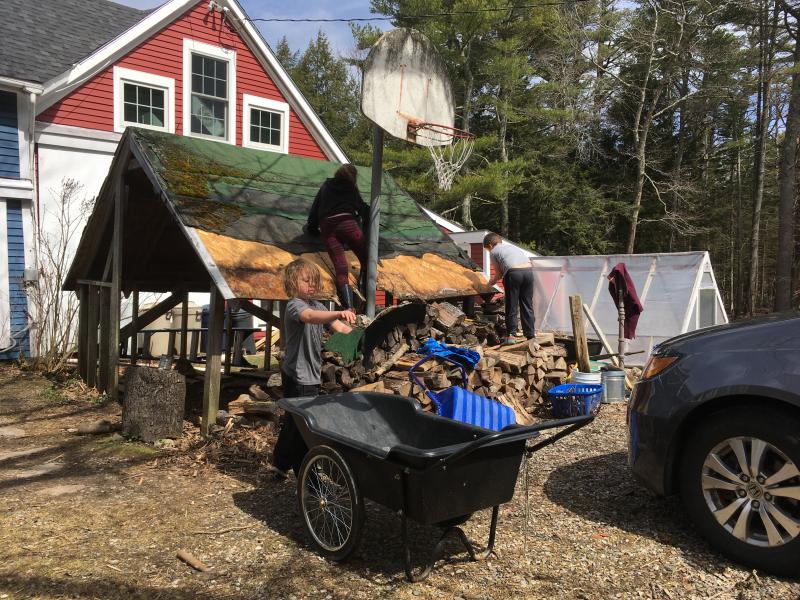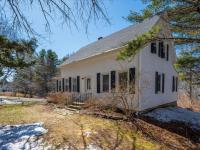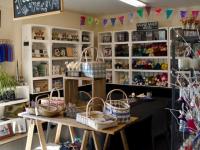This Week in Lincolnville: Deconstructing
It took a mere three days to bring down the woodshed. The children, my upstairs grandchildren, had been itching for weeks to smash a hammer through the rotten place in its roof. That didn’t need a hammer; you could put your fist through the hole that had grown larger every season.
One afternoon a week ago, the children and their mother/home-schooling teacher, Tracee, piled outside after lunch and started in with hammers and crowbars. The first bits of asphalt roofing indeed peeled away with fingers. As the supporting 2-x-4s came out there were lessons in nail removal, stacks of useable wood, metal flashing. The truck bed filled up with the asphalt pieces.
The novelty wore off by the second day, leaving Tracee on her own. And who could have been better? As she studied the way it had been put together she remembered helping her dad, Allan, take down buildings on their place in Dresden. It was a very good memory.
By day three or so, she’d started prying up the large sheets of particle board that formed the roof. Don and I briefly got into the act that day. I watched with amusement as the two sparred on how best to lift those pieces. Ed, his days busy on the phone with therapy clients, provided muscle when it was needed. Turns out, it was pretty firmly nailed together.
In the end, Tracee nearly single-handedly dismantled that woodshed. There was talk, near the end, when only the frame was left, of bringing Don’s big truck up and pulling it over. But I came home from a walk on Sunday to find she’d already taken down all the rafters, still attached at the peak with their collar ties, the ones where the nails were firmly clenched, and with the neat little bird mouths we’d cut so long ago.
We built it, Wally and I, around thirty years ago. It wasn’t our first woodshed. None of our projects that have survived until today were our first. The deck, henhouse, sauna, greenhouse have all gone through at least two, three, maybe more versions of their current selves, and I’m already eyeing the greenhouse for its next upgrade.
Barnyard carpentry we called it, our often clumsy, sometimes sturdy and always economical outbuildings and addendums to this already sprawling big house/little house/back house/barn we moved into fifty years ago. What did we know when we started?
Very little.
But we started big, jacking up the lower barn, the piece someone else had somewhat clumsily added to the sturdier barn you see from the road. Its sills had rotted under generations of animals; horses for sure, as their shoes turned up everywhere, and undoubtedly a cow, because every family kept a milk cow.
Wally asked everyone who stopped by (and in those days almost anyone had a knowledgeable opinion on such things), what we ought to do about the lower barn. “Tear it down,” was the universal suggestion.
But we were young and optimistic, already envisioning this barn full of animals again. My office-bound Dad, a city boy who’d been shipped away every summer, once to work for an Iowa farmer, and another year to a great-aunt on the coast of Maine, was itching to get his hands on this old place of ours.
An aside: Bud Roesing and I were like two peas in a pod, somewhat surprising as I’d come to him and his wife, Ruth as a nine-week-old baby. The old nature-nurture conundrum I grew up with seemed to fall to the nurture side, at least where Dad was concerned. But then there’s the birth sister I met in mid-life. Almost immediately we sensed a connection that could only have come through our mother, a woman I never knew.
Wally was a Maine boy, but with no father to show him the way, he had no country skills. And worse, no confidence that he could do it. I, on the other hand, a city girl, equally without country skills, had an abundance of confidence.
We were quite a pair.
But this is about the woodshed. So we built it a long time ago, right handy to the kitchen door, 10 feet square with a steeply-pitched roof. “It looks like a wedding chapel,” said more than one observer. I designed it, probably sketched on the back of some scrap paper, and the two of us built it.
The boys were still home and filling the woodboxes every morning. I remember our oldest with an armful, turning sideways to fit through the supporting 2 x 4s. Right off, I realized the opening was too narrow for comfort. Too late. The thing was built.
But that memory dates it. If Bill was a boy of say, 12, with an armload of wood, we’d built the shed by the early 1980s.
Every year Wally put away the winter’s wood; we never cut our own, as we have no woodlot, but bought it in four-foot lengths, some nine cords a year. He cut and split it, working at the pile in the driveway nearly every day that school was out, first sawing it to length, then splitting it with a maul. In later years we began getting our wood from Brad Bowen, cut and split, dumped three cords at a time in the driveway.
Wally would be right at it, anxious to get at it, stacking that green wood into neat, round piles all over the front yard. He’d have those three cords stacked in a day and a half. Of course, before tackling the next year’s wood he’d have put last year’s into the shed.
This dance of the wood took us several years to figure out. You’ve got to always have two years’ worth of wood on hand – the drying, green wood, and the seasoned wood to burn this year. We figured it out, just never had the money for both seasons.
That woodshed, smack in the middle of our dooryard, eventually sprouted a basketball hoop, a hand-me-down from one of Wally’s lawn-mowing customers. We cut a hole in the eaves of the shed to accommodate the big pole, and that’s where the roof started rotting.
But the rotten roof didn’t spell the shed’s doom, though the moss that grew all over it contributed to its generally dismal appearance. At least that became the talk around here after the big renovation of two years ago.
After Wally died three years ago, we – son Ed, Tracee and I – decided to renovate the upstairs into a house for their family. Some six months later they moved in, and we all admired the barn’s new façade complete with double French doors. This would be the new entrance to Sleepy Hollow Rag Rugs, the shop/studio where Wally and I made rugs.
Except the ratty, old woodshed blocked that entrance. I have to say, it never looked ratty to me. I rather liked it for its memories, its convenience, for its lovely, mossy roof.
But I’ve learned a lot in the past three years. I’ve learned to live with change. Things don’t stay the same. The people in your life leave you, one way or another they leave. And new people come into it. Decisions, big ones like living under the same roof with the two generations behind you, mean change.
If the people I live with, the people I love, the people who will, no doubt, someday live in the rooms I now inhabit want the woodshed gone, then I’m okay with it.
Now that it’s down, I have to agree – the view from where I sit, where the sun first shows above the trees in the Hollow, to the grape arbor and the garden beyond is lovely. Today, April 20, 2020 would have been our 50th anniversary. I’ll bet he would have liked the view as well.
Week Four? Week Five?
I’ve lost track of the days, not just the date, but the day of the week, and find I have to check my phone to see what day it is. Waking up to an absolutely blank calendar every morning feels like a luxury, and it’s a guilty one at that. With so many people out of work, out of money, out of food even, waiting in horrendous lines, with so many sick, some desperately sick and then the ones grieving the loss of a loved one… it’s no time to be going on about the pleasures of enforced stay-at-home.
Yet here we are, most of us in this town anyway, with the beautiful world outside our doors. Any one of us can walk along a road, up a path, along the shore, clean out our gardens, wave to our friends, perhaps even share a walk, appropriately distant of course.
Are you a member of the Lincolnville Bulletin Board? It’s proving an excellent place to post local information during this time of little face-to-face communication. If you’d like to join send me or Pat Patnum pputnam@mac.com an email and we’ll add you to the board.
Just now someone asked if anyone was collecting returnables these days; Doug and Stephanie posted: “We are around the corner from the Center Store heading north on 52. Money going to Ben and Amy Watts across the street whose house burned down.”
Rick McLaughlin’s Lobster Shack opened the other day with take out service. The General Store in the Center, Dot’s at the Beach, Dolce Vita Farm, Bahner Farm in Belmont, Viking, Western Auto, Mike’s Align & Repair, Aubuchon in Belfast, the Camden Deli, French and Brawn, Megunticook Market, Hannaford’s in Belfast and Camden, Wentworth’s in Northport, Rankin’s, EBS, and Scott’s are open, all with measures in place to keep customers safe. Most businesses have Facebook or web pages with information on how they’re doing business these days.
Condolences
I was sad to read of Rich Roberts’ death this past week. As members of the Midcoast Substance Abuse Council back in the 1990s, Rich and I found ourselves sharing chaperone duties at the monthly middle school dances held at the old Y and sponsored by the Council. Some time later one of my sons worked for Rich on his painting crew during college. As the daughter of a dementia patient I can well imagine what these past years have been for his family….
Event Date
Address
United States
























